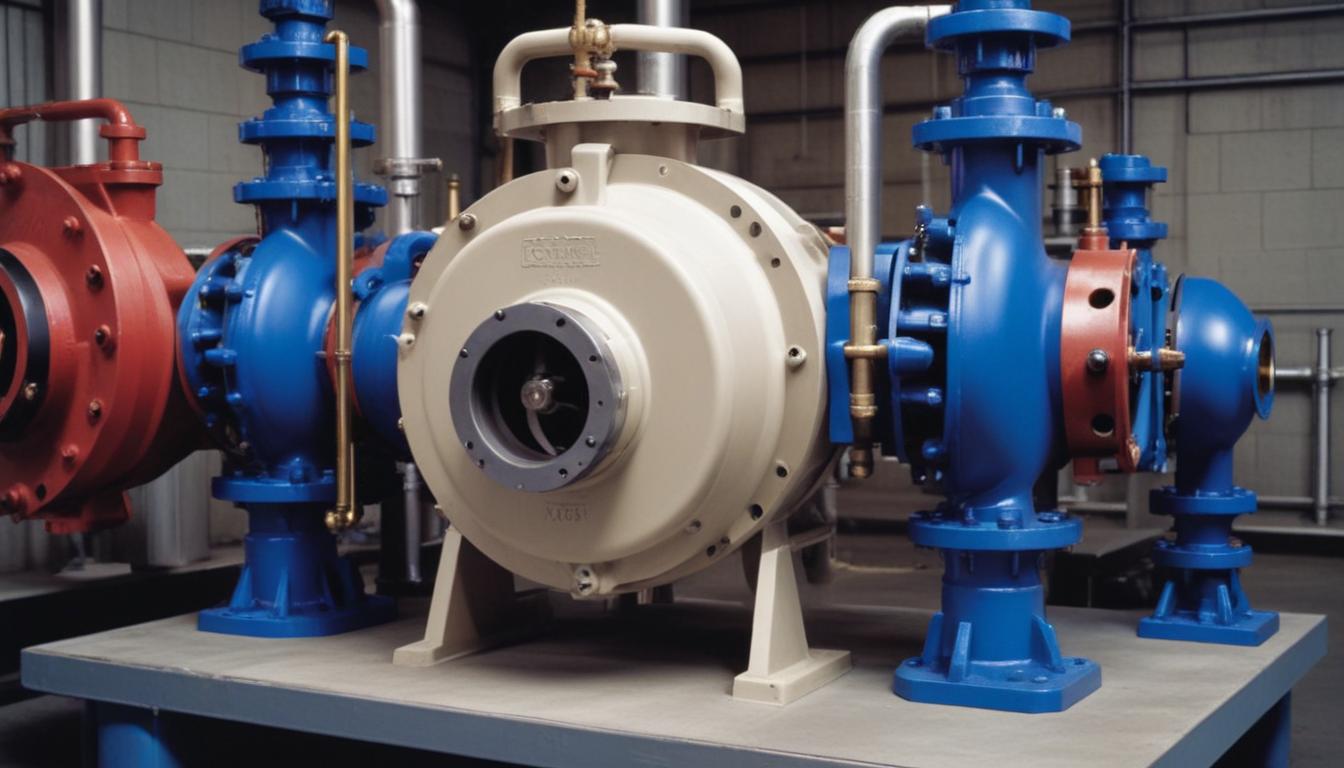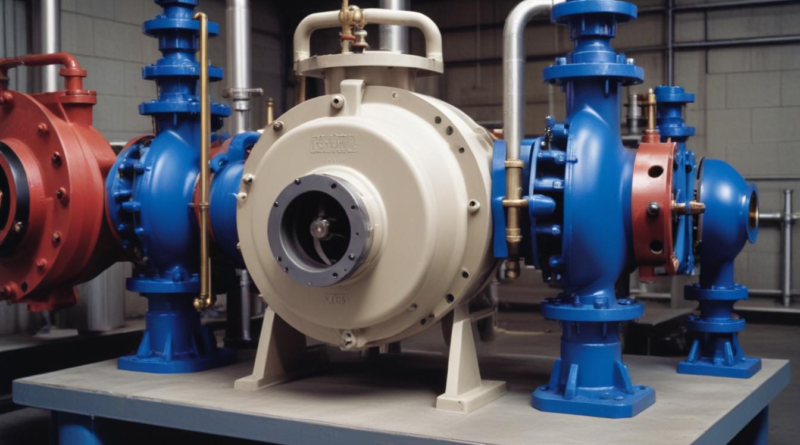how to select pump materials for chemical resistance
Understanding the specific chemical resistance requirements is pivotal in ensuring the longevity and efficiency of chemical-resistant pumps. This involves a comprehensive analysis of the chemical properties of the fluids being handled, including their corrosiveness, reactivity, and temperature ranges. Accurate material selection hinges on this understanding to prevent pump failure and maintain operational integrity.
Key factors to consider include:
– Chemical Nature: Identifying whether the substance is acidic, basic, oxidizing, or reducing.
– Concentration Levels: Higher concentrations often require more robust materials to withstand aggressive environments.
– Temperature Conditions: Elevated temperatures can accelerate chemical reactions that may degrade materials.
– Viscosity and Particulate Content: Thicker fluids or those with solids can impose additional mechanical stresses on pump materials.
A systematic approach to evaluating these requirements can be outlined as follows:
- Identify Chemical Properties
- Determine the pH level of the chemical.
- Assess the potential for oxidation or reduction.
- Evaluate the volatility and toxicity.
- Assess Operating Conditions
- Operating temperature ranges.
- Pressure levels within the system.
- Flow rates and dynamic conditions.
- Determine Long-term Exposure Effects
- Evaluate potential for material corrosion or degradation over time.
- Consider the impact of repeated thermal cycling.
- Analyze the influence of environmental factors such as humidity.
To facilitate the material selection process, the following table categorizes common chemicals and their compatibility with various pump materials:
| Chemical Type | Compatible Materials | Incompatible Materials |
|---|---|---|
| Acids (e.g., Sulfuric, Hydrochloric) | Stainless Steel, Hastelloy, Teflon | Carbon Steel, Aluminum |
| Bases (e.g., Sodium Hydroxide) | Stainless Steel, PVC, EPDM Rubber | Cast Iron, Certain Plastics |
| Organic Solvents (e.g., Acetone, Ethanol) | Stainless Steel, PTFE, PVDF | Rubber Seals, Certain Elastomers |
| Oxidizing Agents (e.g., Hydrogen Peroxide) | Stainless Steel, Monel, Viton | Aluminum, Copper Alloys |
By meticulously understanding the chemical resistance requirements, engineers can make informed decisions during the material selection process, ensuring that the chosen materials effectively withstand the specific challenges posed by the chemicals in question. This foundational knowledge is essential for the successful deployment and maintenance of durable and reliable pumping systems.
evaluating material compatibility
Ensuring the chosen materials are compatible with the chemicals they will encounter is critical for the reliability and durability of chemical-resistant pumps. Material compatibility evaluation involves a systematic assessment of how different materials interact with the intended chemicals under specific operating conditions. This process helps prevent premature failure, leaks, and other operational issues that can arise from inappropriate material choices.
Key strategies for evaluating material compatibility include:
– Utilizing Compatibility Charts and Databases: These resources provide valuable information on how various materials respond to different chemicals. They offer a quick reference to identify potential issues and guide the initial material selection process.
– Conducting Laboratory Testing: Laboratory experiments, such as immersion tests and accelerated aging studies, simulate the long-term effects of chemical exposure on materials. These tests help verify the data obtained from compatibility charts and provide insights into material performance under specific conditions.
– Referencing Industry Standards and Certifications: Adhering to established standards (e.g., ASTM, ISO) ensures that materials meet the necessary requirements for chemical resistance and performance. Certifications from recognized bodies can also validate the suitability of materials for particular applications.
Factors to consider during material compatibility evaluation include:
- Chemical Interaction Mechanisms: Understanding whether the primary mode of interaction is corrosion, swelling, dissolution, or another chemical reaction helps in selecting materials that can withstand these effects.
- Operating Conditions: Temperature, pressure, and flow rates can influence material behavior. Materials must maintain their integrity and performance under the specific conditions of use.
- Mechanical Stresses: Beyond chemical interactions, materials should also be evaluated for their ability to handle mechanical stresses such as vibration, abrasion, and cyclic loading.
The following table highlights the compatibility of various materials with different chemical classes, aiding in the evaluation process:
| Material | Compatible Chemicals | Potential Issues |
|---|---|---|
| Stainless Steel | Acids (up to certain concentrations), Bases, Organic Solvents | Chloride-induced pitting, Stress corrosion cracking in specific environments |
| PTFE (Polytetrafluoroethylene) | Most acids and bases, Organic and Inorganic Solvents | Poor mechanical strength, Limited temperature range |
| Viton (FKM) | Hydrocarbons, Ketones, Esters | Swelling in certain aromatic solvents, Limited chemical resistance to acids |
| Hastelloy | Strong acids, Oxidizing agents | High cost, Susceptible to certain chlorides |
By thoroughly evaluating material compatibility through these methods and considerations, engineers can make informed decisions during the material selection process. This ensures that the selected materials will effectively resist the specific chemicals involved, thereby enhancing the performance and longevity of the pumping systems.
considering mechanical properties
When selecting materials for chemical-resistant pumps, it is essential to evaluate their mechanical properties to ensure reliable performance under operational stresses. Material selection must account for various mechanical attributes that influence both the pump’s durability and efficiency. Key mechanical properties to consider include tensile strength, hardness, ductility, fatigue resistance, and wear resistance.
Tensile Strength is crucial as it determines a material’s ability to withstand pulling forces without failure. High tensile strength materials are necessary in environments where the pump is subjected to significant internal pressures or external mechanical stresses. Similarly, Hardness assesses a material’s resistance to surface deformation and wear. Materials with higher hardness levels are preferred in applications involving abrasive fluids or particulate-laden media, which can otherwise degrade pump components over time.
Ductility is another important property, reflecting a material’s capacity to undergo significant plastic deformation before rupture. High ductility ensures that materials can absorb energy and deform without cracking, which is vital in dynamic systems where pumps experience fluctuating loads and thermal cycling. Fatigue Resistance measures the ability of a material to endure cyclic loading without initiating cracks. Pumps operating in environments with variable flow rates or pressure swings benefit from materials with excellent fatigue resistance, minimizing the risk of unexpected failures.
Wear Resistance is essential for maintaining the integrity of moving parts within the pump. Materials with superior wear resistance can prolong the lifespan of components such as impellers, seals, and bearings by reducing material loss and surface degradation. Additionally, Thermal Expansion must be considered, especially in applications involving temperature variations. Materials with compatible thermal expansion coefficients ensure that components maintain their fit and function across different temperature ranges, preventing mechanical stresses that could lead to leaks or misalignments.
To facilitate the comparison of mechanical properties across common pump materials, the following table provides an overview:
| Material | Tensile Strength (MPa) | Hardness (Rockwell C) | Ductility (%) | Fatigue Resistance | Wear Resistance |
|---|---|---|---|---|---|
| Stainless Steel (304) | 520 | 80 | 40 | High | Moderate |
| Hastelloy C-276 | 690 | 95 | 30 | Very High | High |
| PTFE | ~ | 40 | 500 | Low | Low |
| Cast Iron | 200 | 60 | 10 | Moderate | High |
Impact Resistance is another critical factor, particularly in environments where the pump may experience sudden shocks or impacts. Materials with high impact resistance can better withstand such forces without fracturing, ensuring continuous operation and reducing maintenance needs. Modulus of Elasticity also plays a role in determining how a material deforms under stress. A higher modulus indicates a stiffer material, which can be advantageous in maintaining dimensional stability and minimizing vibrations during pump operation.
Furthermore, Corrosion Resistance often intersects with mechanical properties, as the ability to resist corrosive environments can prevent mechanical degradation. Selecting materials that offer both excellent corrosion and mechanical performance is essential for maintaining the structural integrity and functionality of chemical-resistant pumps over extended periods.
In conclusion, a comprehensive assessment of mechanical properties is indispensable in the material selection process for chemical-resistant pumps. By carefully evaluating attributes such as tensile strength, hardness, ductility, fatigue resistance, and wear resistance, engineers can ensure that the chosen materials will meet the demanding operational requirements and contribute to the pump’s overall reliability and longevity.
assessing cost and availability
 When evaluating the financial and logistical aspects of material selection for chemical-resistant pumps, it is essential to consider both the initial costs and the long-term economic implications. Budget constraints often play a pivotal role in the decision-making process, requiring a balance between material performance and affordability. Several factors influence the overall cost and availability of pump materials, including raw material prices, manufacturing complexity, availability of suppliers, and regional market conditions.
When evaluating the financial and logistical aspects of material selection for chemical-resistant pumps, it is essential to consider both the initial costs and the long-term economic implications. Budget constraints often play a pivotal role in the decision-making process, requiring a balance between material performance and affordability. Several factors influence the overall cost and availability of pump materials, including raw material prices, manufacturing complexity, availability of suppliers, and regional market conditions.
Cost Considerations:
- Initial Material Cost: Different materials vary significantly in price. For example, high-performance alloys like Hastelloy and titanium generally cost more than standard stainless steels or plastics.
- Installation and Fabrication Costs: Some materials may require specialized manufacturing processes or equipment, increasing the overall cost of pump assembly.
- Maintenance and Replacement: Materials with higher durability and resistance to corrosion can reduce maintenance frequency and extend the pump’s operational lifespan, potentially lowering total ownership costs.
- Lifecycle Costs: Evaluating the total cost of ownership, including energy efficiency, downtime, and repair costs, provides a more comprehensive understanding of financial implications.
Availability Factors:
- Supplier Availability: The number of suppliers offering a particular material can affect both the cost and lead times. Limited suppliers may lead to higher prices and longer wait times.
- Lead Times: Materials that are readily available locally tend to have shorter lead times, facilitating quicker project completion and reducing delays.
- Regional Market Conditions: Geographic location can influence material availability and cost due to transportation expenses, tariffs, and local demand.
- Material Lead Times: Understanding how quickly a material can be sourced is crucial for project scheduling and timely installation of chemical-resistant pumps.
Balancing these cost and availability considerations is critical in selecting the most appropriate material for chemical-resistant pumps. Engineers must weigh the upfront expenses against the long-term benefits, ensuring that the chosen material aligns with both budgetary constraints and performance requirements.
The following table provides a comparative overview of common materials used in chemical-resistant pumps, highlighting their cost range and availability status:
| Material | Cost Range (USD per kg) | Availability | Notes |
|---|---|---|---|
| Stainless Steel (304) | $2 – $4 | High | Widely available, cost-effective for many applications |
| Hastelloy C-276 | $25 – $40 | Moderate | High performance but expensive and less readily available |
| PTFE | $10 – $20 | High | Good chemical resistance, limited mechanical strength |
| Titanium | $15 – $30 | Low to Moderate | Excellent corrosion resistance, higher cost and availability issues |
| PVC | $1 – $3 | High | Economical for less demanding applications, limited temperature range |
Strategies for Managing Cost and Ensuring Availability:
- Material Standardization: Utilizing commonly available materials can reduce costs and simplify procurement processes.
- Bulk Purchasing: Securing materials in larger quantities may lead to discounts and more stable supply chains.
- Supplier Diversification: Engaging multiple suppliers can mitigate risks associated with shortages and price fluctuations.
- Alternative Materials: Exploring substitute materials with similar chemical resistance profiles but lower costs can offer economic benefits without compromising performance.
- Long-term Contracts: Establishing long-term agreements with suppliers can ensure better pricing and priority in material availability.
By thoroughly assessing both the cost and availability of materials, engineers can make informed decisions that optimize the balance between financial constraints and the technical requirements of chemical-resistant pumps. This comprehensive evaluation ensures that the selected materials not only fit within budgetary limits but are also accessible when needed, thereby supporting the reliable and efficient operation of pumping systems in chemically demanding environments.
selecting appropriate pump materials
Selecting the most suitable materials for chemical-resistant pumps involves a strategic approach that balances material performance, compatibility, mechanical properties, and economic factors. This multi-faceted process ensures that the chosen materials not only resist the specific chemicals involved but also maintain the pump’s integrity and functionality under various operating conditions.
Key Steps in Material Selection:
- Define Operational Requirements
- Identify the specific chemicals to be handled, including their concentrations and potential impurities.
- Determine the operating temperature and pressure ranges.
- Assess the flow rates and any dynamic conditions that may impact material performance.
- Identify Potential Materials
- Consider a range of materials such as stainless steels, exotic alloys, polymers, and composite materials.
- Evaluate each material’s inherent chemical resistance based on compatibility charts and manufacturer data.
- Evaluate Mechanical Properties
- Ensure the material can withstand mechanical stresses, including tensile strength, hardness, and fatigue resistance.
- Consider the material’s wear resistance and ability to handle abrasive fluids or particulates.
- Consider Economic Factors
- Analyze the initial cost of materials against long-term maintenance and replacement expenses.
- Assess the availability of materials and potential lead times for procurement.
- Make an Informed Selection
- Choose materials that offer the best balance of chemical resistance, mechanical performance, and cost-effectiveness.
- Ensure that the selected materials comply with relevant industry standards and certifications.
Common Materials for Chemical-Resistant Pumps:
The following table outlines various materials commonly used in chemical-resistant pumps, highlighting their suitability for different chemical environments and mechanical demands:
| Material | Chemical Resistance | Mechanical Properties | Cost | Common Applications |
|---|---|---|---|---|
| Stainless Steel (316) | Excellent resistance to many acids and chlorides | High tensile strength, good corrosion resistance | Moderate | General chemical processing, food and beverage industry |
| Hastelloy C-276 | Outstanding resistance to a wide range of corrosive chemicals | High strength and durability under extreme conditions | High | Petrochemical, pharmaceutical, and specialized chemical applications |
| PTFE (Teflon) | Compatible with most chemicals, including strong acids and bases | Excellent chemical resistance, low mechanical strength | Moderate to High | Seals, linings, and non-metallic pump components |
| PVDF (Polyvinylidene Fluoride) | Good resistance to a variety of organic and inorganic chemicals | Higher mechanical strength compared to other polymers | Moderate | Chemical handling in water treatment, semiconductor manufacturing |
| Titanium | Excellent resistance to seawater and chlorides | High strength-to-weight ratio, excellent corrosion resistance | Very High | Marine applications, chlor-alkali processes |
Factors Influencing Material Selection:
- Chemical Compatibility: The chosen material must withstand the specific chemicals without degrading or reacting. This involves reviewing compatibility charts and consulting material data sheets.
- Temperature and Pressure: Materials must maintain their integrity under the operational temperature and pressure conditions. High-performance alloys may be necessary for extreme environments.
- Mechanical Stress: Consider the pump’s operational demands, including flow rates, vibration, and potential for mechanical wear. Materials with high fatigue and wear resistance are preferable in dynamic systems.
- Regulatory Compliance: Ensure that materials meet industry standards and regulatory requirements, especially in sectors like pharmaceuticals and food processing where contamination risks are critical.
- Lifecycle and Maintenance: Evaluate the expected lifespan of the material in the given application and its maintenance needs. Durable materials may have higher upfront costs but lower total lifecycle expenses.
Advanced Materials and Innovations:
Emerging technologies and advanced materials are expanding the possibilities for chemical-resistant pump design. Innovations such as composite materials, ceramic coatings, and additive manufacturing allow for enhanced performance and customization:
- Composite Materials: Combining polymers with reinforcing fibers can create materials that offer superior chemical resistance and mechanical strength.
- Ceramic Coatings: Applying ceramic layers can protect pump components from aggressive chemicals and high temperatures, extending their service life.
- Additive Manufacturing: 3D printing enables the creation of complex geometries and the use of specialized materials tailored to specific chemical environments.
Case Study: Material Selection for an Acidic Chemical Pump
Consider a pump designed to handle concentrated sulfuric acid at elevated temperatures. The material selection process would involve:
- Chemical Compatibility: Sulfuric acid is highly corrosive, necessitating materials like Hastelloy C-276 or Teflon for key components.
- Mechanical Properties: The pump must withstand high temperatures and pressures, so materials with high tensile strength and thermal stability are required.
- Economic Evaluation: While Hastelloy C-276 offers excellent performance, its high cost may lead to evaluating alternative materials or using it selectively for critical components.
- Final Selection: A combination of Hastelloy C-276 for the pump casing and PTFE-lined seals may provide the necessary chemical resistance and mechanical performance within budget constraints.
By following a structured approach to material selection, engineers can effectively choose the appropriate materials that ensure the reliability and longevity of chemical-resistant pumps. This meticulous process not only enhances pump performance but also contributes to operational efficiency and safety in chemically demanding environments.



